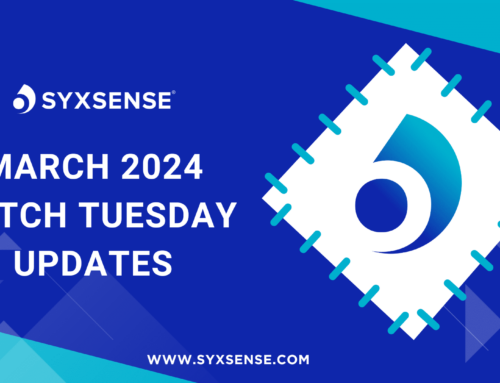
For the CEO or COO hearing the word patching for the first time from the experts in their IT department, an array of ideas might float into their head. “How much is this going to cost me?” “I thought we just solved that data breach protection protocol two months ago?” Or, “I am tired of solutions that don’t fix the problems with our company data, they just seem to be band-aids.”
Unfortunately this is the hurdle facing information technology professionals as they work around the clock to protect their company’s proprietary data from exogenous threats. According to the Cisco 2015 Annual Security Report, only four in 10 company IT departments have a coordinated patching strategy.
A patch is in fact not a temporary solution at all, but rather a strategic method by which to update existing software programs by inserting new code into the current operating code. These updates may involve areas such as mitigation of software bugs to addressing vulnerable security systems, or simply installing software upgrades provided by vendors.A patch is in fact not a temporary solution at all, but rather a strategic method by which to update existing software programs by inserting new code into the current operating code. These updates may involve areas such as mitigation of software bugs to addressing vulnerable security systems, or simply installing software upgrades provided by vendors.
These operating system updates may be from Microsoft on their Patch Tuesdays, but also can include third party vendor software updates like Adobe, Cisco, Java, Apple and others.
In the current environment where data security issues and protocols are the primary concern for a business, the fundamental issue becomes how an IT department provides the necessary patching services to all of the organization’s endpoints.First Steps
In developing a strategic approach to patching, the reality is that there must be buy-in from the leadership team. Patching is a pro-active engagement, not a reactive one. Think of this analogy, a computer much like the human body can get sick. In order to alleviate the symptoms, one would take medicine, or in the case of the machine an antivirus. The concern though is that the antivirus/medicine does not solve the underlying reasons for being sick: diet, exercise, etc. Following the analogy, computers that just rely on antivirus software and have not been attended to with a coordinated patching effort (solving underlying problems) are more vulnerable to breaking down, malfunctioning or having security compromises.
Once buy-in is established from company leadership, an effective patching framework needs to be built, and can be done by answering five key questions associated with deployment.Which updates should I install?
The best approach to this first query is to prioritize what updates are most necessary and beneficial for the firm’s end users. Three categories are useful to designate the types of updates that flow from software vendors.
- Critical updates offer significant benefits, such as improved security, privacy, and reliability.
- Important updates address non-critical problems or help enhance your computing experience.
- Optional updates can include updates, drivers, or new software to enhance your computing experience.
Read the full article at windowsnetworking.com.




